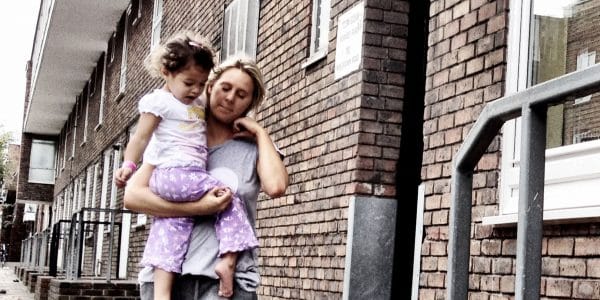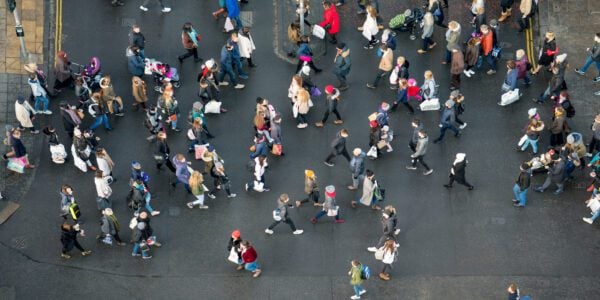
11/09/20
3 min read
Public attitudes towards trade have grown more positive in developed economies over the last decade. This represents a rebound in attitudes, which became significantly more negative during the 2000s. The decline in attitudes towards trade over that period tended to be greater in countries that saw larger increases in Chinese imports relative to their manufacturing bases.
In the US and the UK, the declines were also greater amongst workers who do not have a university education – for whom the evidence suggests that the adverse effects of increased Chinese import competition were greater. Despite the increased political focus on trade over the last decade, public attitudes have become more relaxed as the pace of change in competition from China has slowed.
Across developed countries, those with a university education are more likely to have a favourable impression of international trade, and to believe that it has specific benefits in terms of creating jobs, reducing prices and increasing wages. Those without a university education tend to be more sceptical. This is consistent with evidence from studies showing that the effects of increased trade are relatively more adverse for lower-skilled workers. By contrast, those with a university education are much more likely to only experience the upsides of increased trade.
These are among the main findings of new analysis by IFS researchers together with David Dorn at the University of Zurich, published today as part of the Nuffield-funded IFS Deaton Review of Inequality. The work draws on data from several waves of the Pew Global Attitudes Survey between 2002 and 2018.
The main findings include:
- Attitudes towards trade deteriorated before the 2008 financial crisis but have rebounded since. Data from the Pew Global Attitudes Survey show that the proportions of people in the US, the UK, France, Germany and Italy holding positive attitudes towards international trade fell between 2002 and 2007. However, by 2018, these declines had largely reversed in all these countries except Italy.
- Declines in positive attitudes towards trade between 2002 and 2007 tended to be greater in countries that saw larger increases in net imports from China relative to the initial size of their own manufacturing workforce. The US stands out as having seen both a particularly large increase in Chinese imports per manufacturing worker over this period and one of the largest deteriorations in positive attitudes towards trade.
- By 2018, a substantial majority of respondents rated growing trade and business ties between their own country and other countries as ‘very good’ or ‘somewhat good’. This was true of around 90% of people in the UK and Germany, and three-quarters of those in the US.
- In most OECD countries covered by the Pew survey, the public is more likely to believe that trade creates jobs than that it reduces prices or increases wages. There is a difference here between the views of the public and of economists, who tend to find that trade has clear and immediate benefits through lower consumer prices but more ambiguous effects on wages and employment, since greater trade may worsen labour market outcomes for some groups of workers.
- Those with a university education are more likely to believe that trade with other countries is somewhat good or very good. They are also more likely to agree that trade creates jobs than those without a degree. This holds true across all OECD countries covered by the Pew survey. For example, in the UK, 57% of those with degrees thought that trade created jobs, compared with 48% of those without a university degree.
- In the US, the UK, Germany and France, declines in positive attitudes towards trade between 2002 and 2007 were greater amongst those without a degree. For example, in the UK, the proportion of those with a degree agreeing that trade with other countries is very good or somewhat good fell by 6 percentage points, while among those without a degree this proportion fell by 15 percentage points. This is consistent with evidence that the impacts of increased Chinese imports during this period were relatively more adverse for workers in less-skilled occupations. Declines in favourable attitudes in Italy were, however, slightly greater among those with a university education.
Alex Davenport, a Research Economist at IFS, said: ‘Attitudes towards trade in developed economies deteriorated in the 2000s even before the onset of the financial crisis during a period when growing import competition – particularly from China – displaced local manufacturing jobs. Since then, however, they have largely recovered in many countries. Overall, the data do not show evidence of a serious reversal in public attitudes towards free trade in recent years despite escalating trade tensions and increasing trade barriers. Whether the COVID-19 pandemic will have large and lasting effects on attitudes towards globalisation is still very much unknown.’
Peter Levell, a Senior Research Economist at IFS, said: ‘Our results highlight how the potential benefits of freer trade may only be realised if there is broad public support for the open trade policies that underpin them, and if particular attention is paid to those who lose out.’
More about the IFS Deaton Review of Inequalities























































